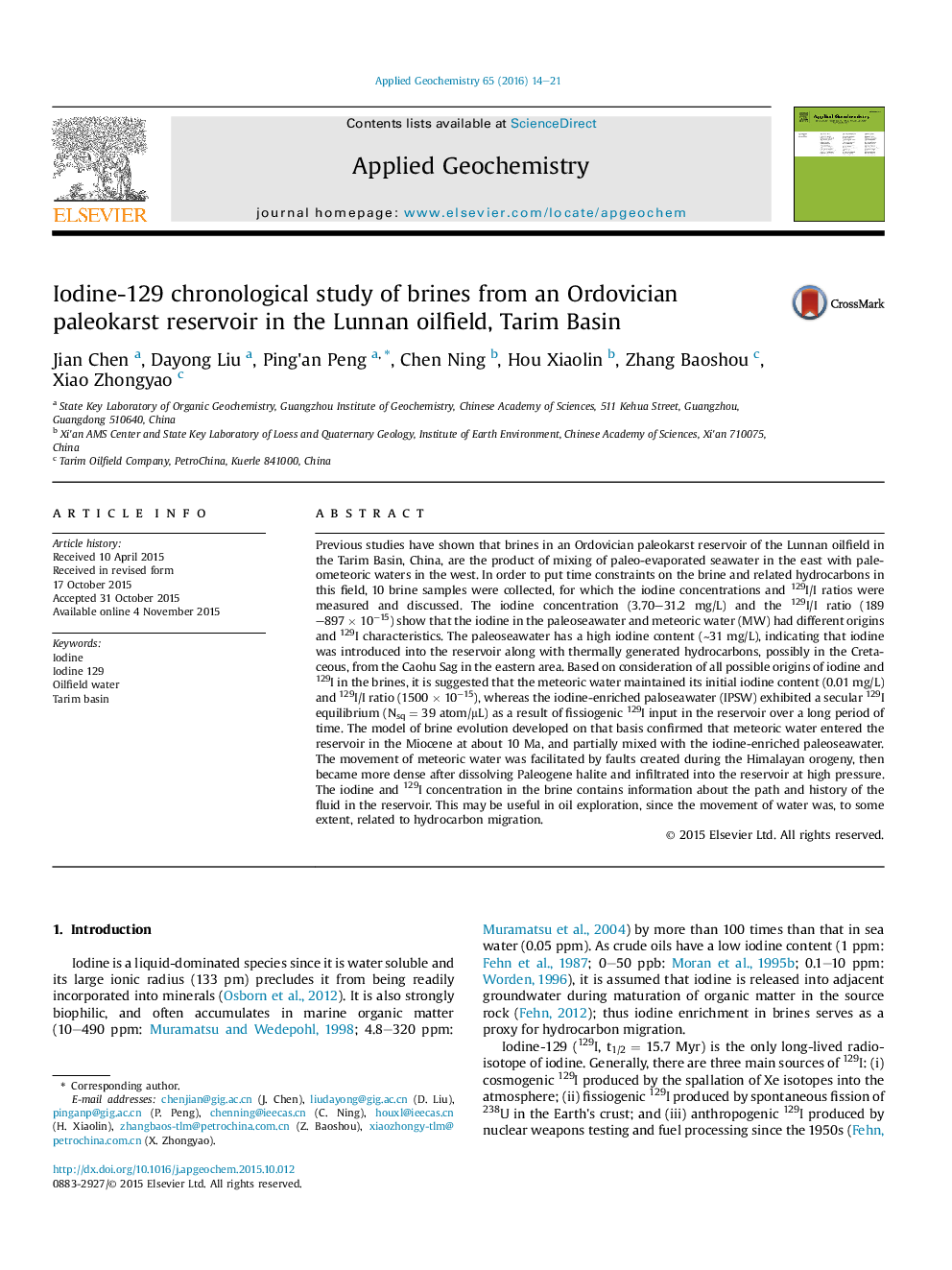| کد مقاله | کد نشریه | سال انتشار | مقاله انگلیسی | نسخه تمام متن |
|---|---|---|---|---|
| 4435586 | 1620226 | 2016 | 8 صفحه PDF | دانلود رایگان |
• A 129I chronological study of deep oilfield waters from an Ordovician paleokarst reservoir was conducted.
• The detailed mixing process of paleoseawater and meteoric water was reconstructed from iodine concentration and 129I data.
• The proposed mixing model confirms that meteoric water entered the reservoir in the Miocene (about 10 Ma).
Previous studies have shown that brines in an Ordovician paleokarst reservoir of the Lunnan oilfield in the Tarim Basin, China, are the product of mixing of paleo-evaporated seawater in the east with paleometeoric waters in the west. In order to put time constraints on the brine and related hydrocarbons in this field, 10 brine samples were collected, for which the iodine concentrations and 129I/I ratios were measured and discussed. The iodine concentration (3.70–31.2 mg/L) and the 129I/I ratio (189–897 × 10−15) show that the iodine in the paleoseawater and meteoric water (MW) had different origins and 129I characteristics. The paleoseawater has a high iodine content (∼31 mg/L), indicating that iodine was introduced into the reservoir along with thermally generated hydrocarbons, possibly in the Cretaceous, from the Caohu Sag in the eastern area. Based on consideration of all possible origins of iodine and 129I in the brines, it is suggested that the meteoric water maintained its initial iodine content (0.01 mg/L) and 129I/I ratio (1500 × 10−15), whereas the iodine-enriched paloseawater (IPSW) exhibited a secular 129I equilibrium (Nsq = 39 atom/μL) as a result of fissiogenic 129I input in the reservoir over a long period of time. The model of brine evolution developed on that basis confirmed that meteoric water entered the reservoir in the Miocene at about 10 Ma, and partially mixed with the iodine-enriched paleoseawater. The movement of meteoric water was facilitated by faults created during the Himalayan orogeny, then became more dense after dissolving Paleogene halite and infiltrated into the reservoir at high pressure. The iodine and 129I concentration in the brine contains information about the path and history of the fluid in the reservoir. This may be useful in oil exploration, since the movement of water was, to some extent, related to hydrocarbon migration.
Journal: Applied Geochemistry - Volume 65, February 2016, Pages 14–21
